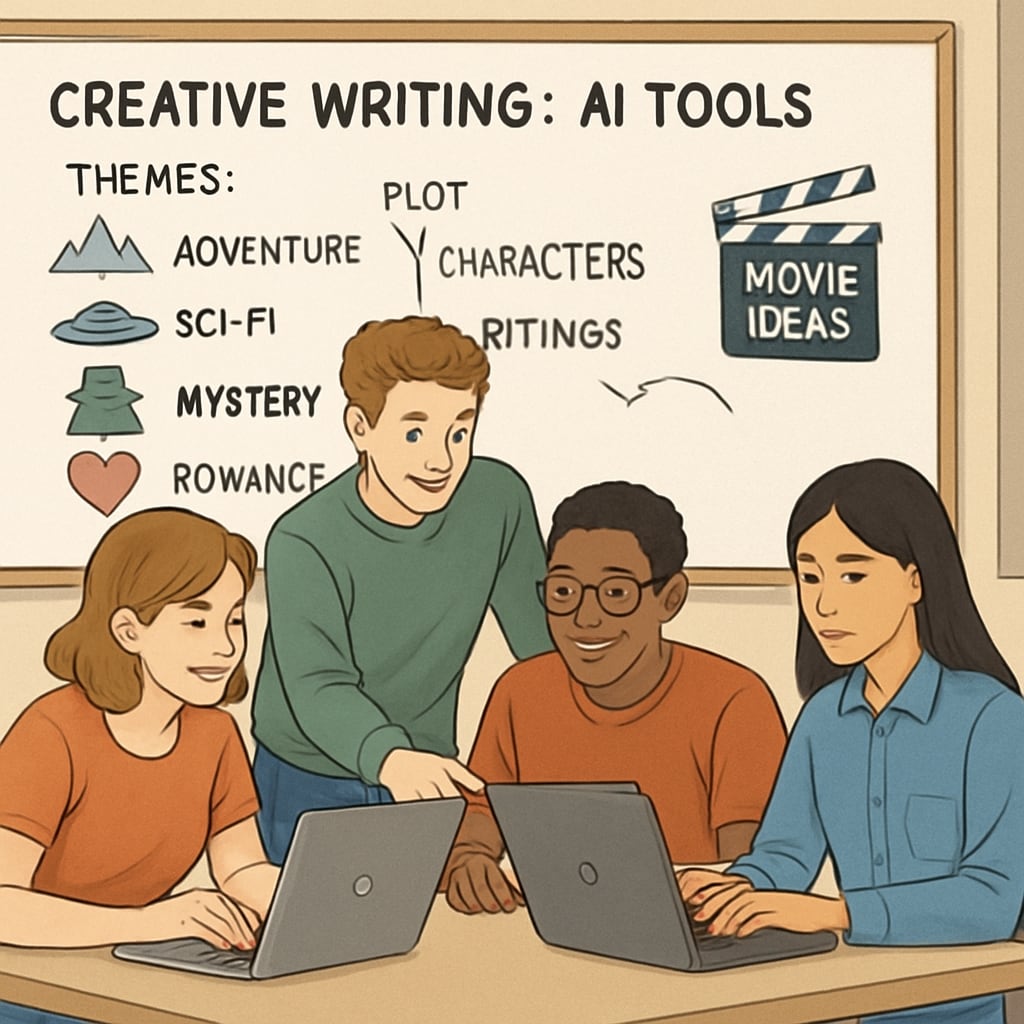In today’s media-rich world, the importance of developing media literacy and visual storytelling skills among high school students has never been greater. Leveraging “AI writing prompts” as part of structured creative writing activities, a new suite of free resources aims to empower teachers and students alike. These tools are particularly valuable for educators teaching English, media studies, or creative writing, fostering critical thinking and creativity using AI platforms such as ChatGPT. Let’s explore how these resources can transform classroom learning.
Why Use AI Writing Prompts in Education?
AI writing prompts offer a dynamic and engaging way to introduce complex concepts like media literacy (the ability to critically analyze media content) and visual storytelling (crafting narratives through images or media). With AI, students receive instant feedback, creative ideas, and structured guidance, making learning more interactive. Teachers can tailor prompts to align with lesson objectives, ensuring that students not only engage with the material but also develop analytical and storytelling skills.
For example, a prompt could ask students to analyze the visual elements of a movie scene or create a short narrative based on a given image. This approach encourages both critical evaluation and imaginative thinking, skills essential for navigating today’s media landscape.

How AI Enhances Media Literacy and Visual Storytelling Skills
Media literacy and visual storytelling are increasingly vital in our digital-first society. Here’s how AI tools like ChatGPT can help high school students enhance these skills:
- Critical Analysis: Prompts can guide students to dissect the themes, tone, and visual elements of films or advertisements, fostering deeper understanding.
- Creative Expression: By generating story ideas or encouraging experimentation with narrative structures, AI supports students in honing their storytelling abilities.
- Interactive Learning: AI-driven tools adapt to individual learning styles, providing personalized feedback and fostering student engagement.
- Collaboration: Group activities using AI prompts encourage teamwork, as students brainstorm and refine their ideas collectively.
By combining these elements, teachers can inspire students to think critically about the media they consume and create, preparing them for both academic and real-world challenges.

Sample AI Writing Prompts for Classroom Use
To help educators get started, here are five sample prompts designed to develop media literacy and storytelling skills:
- Scene Analysis: “Describe the mood of a famous movie scene. How do the director’s choices (lighting, music, camera angles) influence the audience’s emotions?”
- Alternate Ending: “Choose a popular film and write an alternate ending. How would your changes affect the overall theme of the story?”
- Poster Design: “Imagine you are designing a poster for a new movie. Write a description of the poster, including the main image, tagline, and colors. How do these elements attract viewers?”
- Ad Campaign Critique: “Analyze a recent advertisement. What message is it conveying, and what techniques are used to persuade the audience?”
- Personal Narrative: “Create a short story inspired by a photograph. Focus on the emotions and backstory behind the image.”
These prompts can be adjusted for different levels of complexity, ensuring that they are suitable for students in grades 9–12.
Tips for Teachers Implementing AI Writing Prompts
To maximize the potential of AI writing prompts, teachers can follow these tips:
- Set Clear Objectives: Before introducing a prompt, clarify the learning goals and desired outcomes for students.
- Provide Context: Offer background information or examples to help students understand the task and its relevance.
- Encourage Experimentation: Allow students to explore multiple approaches to a prompt, fostering creativity and critical thinking.
- Facilitate Discussion: Use prompts as a starting point for group discussions or peer reviews, encouraging students to share and critique ideas constructively.
- Integrate Technology: Combine AI tools with traditional teaching methods to create a balanced and comprehensive learning experience.
By adopting these strategies, educators can create a supportive environment where students feel empowered to experiment and grow.
Conclusion
AI writing prompts provide a powerful tool for enhancing high school students’ media literacy and visual storytelling abilities. By integrating these resources into English, media studies, or creative writing classes, teachers can inspire critical thinking, creativity, and collaboration. As a result, students gain valuable skills for analyzing and producing media content, equipping them for future academic and professional success.
Whether you’re a teacher looking to enrich your curriculum or a student eager to explore new creative horizons, AI-driven writing prompts offer endless possibilities. Start exploring today and watch your storytelling skills soar!
Readability guidance: This article maintains short paragraphs, uses lists for clarity, and incorporates transition words to ensure smooth reading. It prioritizes active voice and limits the use of technical jargon.


